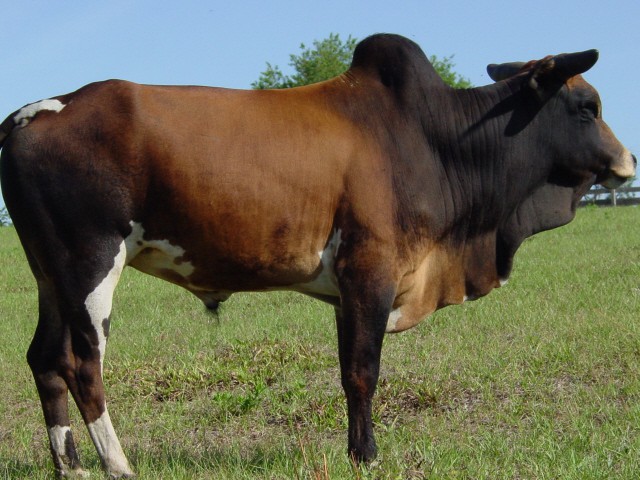Type the name of the breed you're looking for below
[wpdreams_ajaxsearchlite] Don't see the breed your're looking for? Click here and let us know!
Zebu
| Place of Origin | South Asia |
| Origin | Zebu cattle are thought to be derived from Asian aurochs, sometimes regarded as a subspecies, Bos primigenius namadicus. Wild Asian aurochs disappeared during the time of the Indus Valley Civilization from its range in the Indus basin and other parts of the South Asia possibly due to inter-breeding with domestic zebu and resultant fragmentation of wild populations due to loss of habitat. |
| Purpose | Zebu are used as draught oxen, as dairy cattle and as beef cattle, as well as for by-products such as hides, dung for fuel and manure, and bone for knife handles and the like. The quality of the meat is not highly regarded. In August 2007 the zebu was described as "notorious for its tough meat and poor eating quality" after imported steaks served in restaurants of two British public house chains tested positive for zebu genes. |
| Appearance | Zebu have humps on the shoulders, large dewlaps and droopy ears. |
| Horns | Varies on specific breed. |
| Cows Average Weight | Varies on specific breed. |
| Bulls Average Weight | Varies on specific breed. |
| Other Considerations | There are some 75 known breeds of zebu, split about evenly between African breeds and South Asian ones. The major zebu cattle breeds of the world include Gir, Guzerat, Kankrej, Indo-Brazilian, Brahman, Nelore, Ongole, Sahiwal, Red Sindhi, Butana, Kenana, Boran, Baggara, Tharparkar, Kangayam, Chinese Southern Yellow, Philippine native, Kedah - Kelantan, and local Indian Dairy (LID). Other breeds of zebu are quite local, like the Hariana of Haryana and eastern Punjab[5] or the Rath of Alwar in eastern Rajasthan. The African Sanga cattle breeds originated from hybridization of zebu with indigenous African humpless cattle; they include the Afrikaner, Red Fulani, Ankole-Watusi, and many other breeds of central and southern Africa. Sanga cattle can be distinguished from pure zebu by having smaller humps located farther forward on the animals. Zebu were imported to Africa over many hundreds of years, and interbred with taurine cattle there. Genetic analysis of African cattle has found higher concentrations of zebu genes all along the east coast of Africa, with especially pure cattle on the island of Madagascar, either implying that the method of dispersal was cattle transported by ship or alternatively, the Zebu may have reached East Africa via the coastal route (Pakistan, Iran, Southern Arabian coast) much earlier and crossed over to Madagascar. Partial resistance to rinderpest led to another increase in the frequency of zebu in Africa. Zebu were imported into Brazil in the early twentieth century and crossbred with Charolais cattle, a European taurine breed. The resulting breed, 63% Charolais and 37% Zebu, is called the Canchim. It has a better meat quality than the zebu as well as better heat resistance than Asian cattle. The zebu breeds used were primarily Indo-Brazilian with some Nelore and Guzerat. Many breeds are complex mixtures of the zebu and various taurine types, and some also have yak, gaur or banteng genes. While zebu are the common cattle in much of Asia, the cattle of Japan, Korea and Mongolia are taurine (although possibly domesticated separately from the other taurine cattle originating from Europe and Africa). Other species of cattle domesticated in parts of Asia include yak, gaur, banteng and water buffalo. Han-u is a traditional Korean taurine–zebu hybrid breed. In India, the zebu is considered to represent Nandi, the sacred bull of Shiva. |



